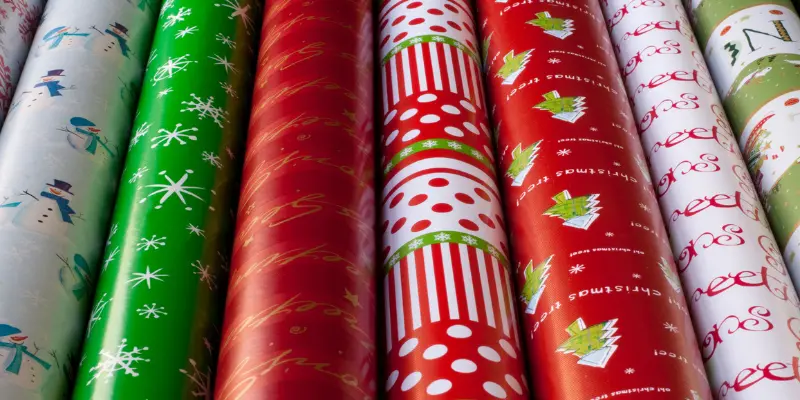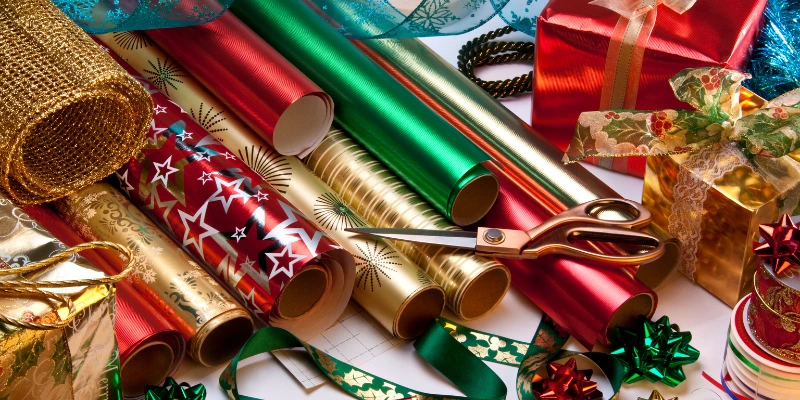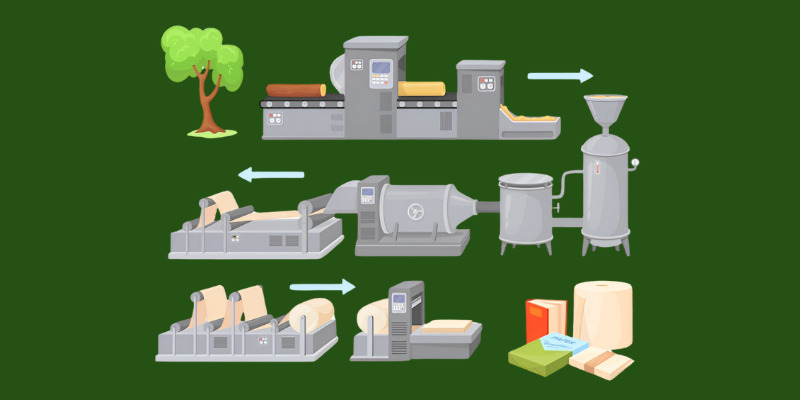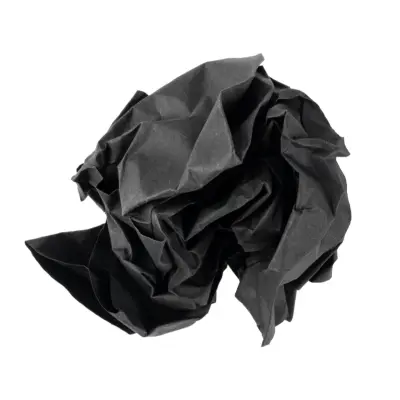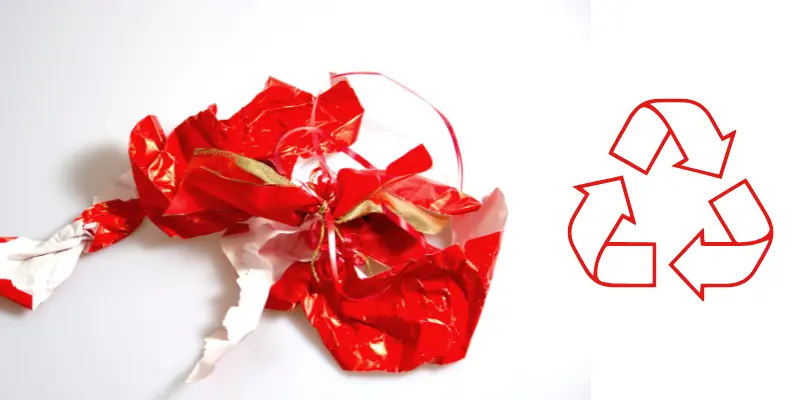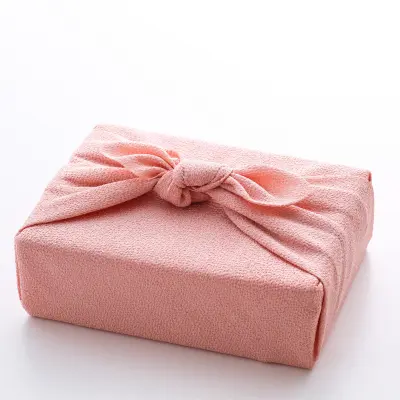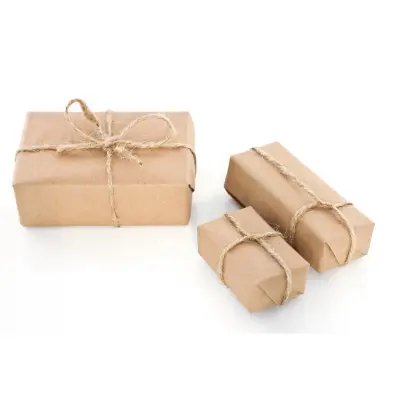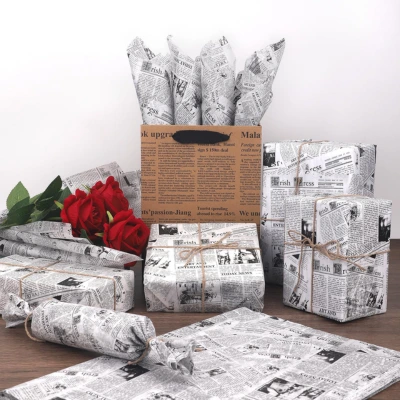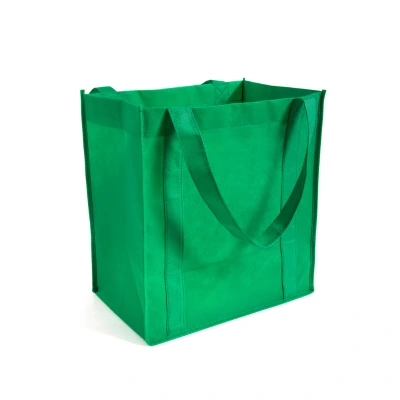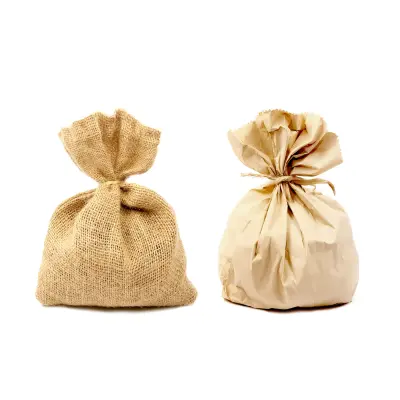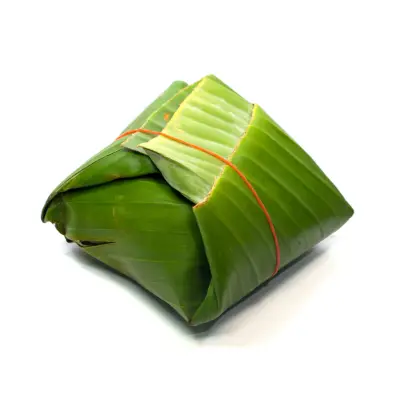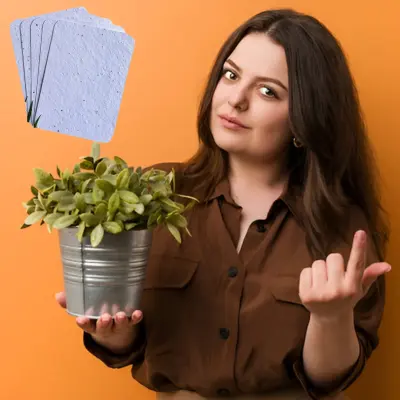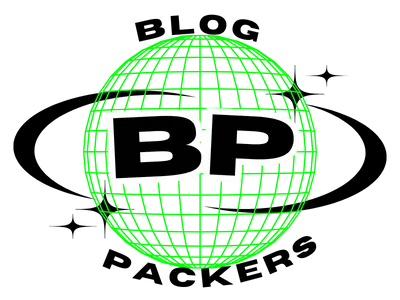During the holiday season, especially in Christmas, the excitement of sending gifts often comes with a hidden environmental cost. Is wrapping paper recyclable? It is a question many of us don’t think about while wrapping gifts for our loved ones.
The use of wrapping paper during the holidays leads to significant waste creation. In the United States alone, Americans produce 25% more waste during the holiday season. Data shows that an additional 5.8 million tons of waste in just December.
While we unwrap our gifts with joy, much of the paper that is discarded, ends up quickly in landfills and causing pollution.
Unfortunately, not all wrapping paper can be recycled. Some are coated with plastics, glitter, or metallic finishes that make them non-recyclable.
As we celebrate the season, it is important to ask: Is wrapping paper recyclable, and how can we reduce waste?
In this blog post, we will dive into the answer to this question and explore sustainable gift wrappers to reduce the impact of wrapping paper waste.
Wrapping paper is a type of decorative paper, generally used to cover gifts.
It is usually colorful, patterned, or printed with elegant designs to make presents look more exciting and special.
People use it to wrap up gifts during holidays, birthdays, or special occasions.
After the gift is unwrapped, the paper is often thrown away, but not all types of wrapping paper are recycled.
No, not all wrapping papers are recyclable!
Many people assume that any paper can be recycled, but in reality, wrapping paper with shiny plastic coatings, glitter, or metallic finishes can not be recycled.
Only plain, uncoated wrapping paper made from wood fiber is generally recyclable.
So, it is important to check the type of wrapping paper before throwing it into the recycling bin.
Plain paper is easy to recycle, but certain additives and coatings make it impossible to break down properly.
Plastic Coatings or Laminations: Many wrapping papers have a shiny plastic layer to make them attractive. Unfortunately, it stops the paper from breaking down into fibers for recycling.
Metallic Foils: Metallic wrapping paper looks brilliant, but it doesn’t decompose easily, like simple paper. They are often mixed with plastic and glitter or colorful microplastic particles, which makes them impossible to recycle and creates pollution.
Glitter & Embossing: Glitter paper makes gift sparkle, and I love to see it, but it also contaminates the recycling process. These tiny colorful microplastics don’t break down and can harm the environment.
Excessive Ink or Dye: Wrapping paper having heavy ink or dye can reduce the quality of the paper when recycled, making it harder to repurpose into new products. To remove ink from paper fibers requires harsh chemicals, which further contribute to environmental pollution.
Paper is something that we use every day, but have you ever wondered how it is made and how much resources it consumes?
Let’s break down how paper is made and how much energy it consumes.
1. Tree Harvesting:
Paper is made from trees like pine, spruce, and eucalyptus. These trees are cut down to gather wood, which is then turned into pulp. This step directly contributes to deforestation.
2. Pulping: The harvested wood is chipped and mixed with water and chemicals to break it down into pulp or fibers. There are two types of pulping:
3. Bleaching: To get bright and white paper, bleaching can be done using chemicals, like chlorine or hydrogen peroxide.
4. Pressing & Drying: The pulp is then pressed into thin sheets, dried, and flattened to form paper.
5. Cutting & Packaging: The paper is cut into the required size (like A4 sheets) and packed for distribution.
The good news is that paper recycling can significantly reduce the impact of paper production.
Saves water: Recycling 1 ton of paper saves up to 17 trees and 7,000 gallons of water.
Uses less energy: It takes up to 60% less energy to make paper from recycled materials compared to new wood pulp.
Prevents deforestation: The more we recycle; the fewer trees need to be cut down.
When it comes to recycling wrapping paper, it is important to know that which types of paper are recyclable and which aren’t.
While some wrapping paper can be recycled, others aren’t because of plastic coating or the use of other materials that prevent them from being recycled.
Here are several simple tests you can use to identify whether your wrapping paper is recyclable or not:
Did you know? Every year, more than 5.8 million tons of wrapping paper are used in the U.S. alone, and nearly half of it ends up in landfills because it is not properly sorted! By doing the scrunch test, you can avoid contributing to this waste.
Try to tear the wrapping paper.
Place a small piece of wrapping paper in a glass of water for a few minutes.
Hold the wrapping paper to a light source like the sun or a flashlight.
Caution: Only perform this test in a safe area, like outdoors or with supervision.
Hold a small corner of the paper and carefully set it on fire (using a match or lighter).
Touch the surface of the wrapping paper with your fingers.
By using these simple tests, you can easily determine if your wrapping paper is recyclable or not.
The next time when you are wrapping gifts, think about the environmental impact of your choices.
When we tear wrapping paper with excitement, it is easy to forget the consequences of our actions.
Every piece of wrapping paper that is discarded has a hidden cost that we often don’t see.
The environmental cost of waste created by wrapping paper is far more significant than we realize, and here is the harsh reality we need to know:
Around 2.3 million pounds of wrapping paper waste ends up in landfills every year during the holiday season.
Non-recyclable paper can take hundreds of years to decompose.
Imagine that pile of discarded wrapping paper sitting in a landfill for hundreds of years.
Every piece of wrapping paper comes from a tree. And when we choose to throw wrapping paper instead of recycling it, we only increase the demand for fresh, new materials.
This means more trees are cut down, leading to deforestation, habitat loss, and reduced carbon absorption.
The process of making paper requires huge amounts of energy and water.
Paper recycling rates are low, so we find ourselves constantly producing new wrapping paper, which leads to higher carbon emissions from manufacturing and transportation.
But the damage doesn’t stop there. When plastic-coated paper ends up in landfills, it produces methane gas that traps heat in the atmosphere and contributes to climate change.
What many people don’t know is that wrapping paper is often bleached with harmful chemicals, such as chlorine and hydrogen peroxide, which can contaminate soil and water.
Non-recyclable papers, like those coated with plastic or glitter, leach toxic chemicals into the soil and water upon their degradation.
The good news is that recycling of wrapping paper is possible. Here’s the right way to do it.
1. Remove All Tape, Ribbons, and Bows
Before recycling your wrapping paper, take a moment to remove any plastic tape, ribbons, or bows. These materials are not recyclable and can interfere with the recycling process.
The crumpled paper takes up extra space and is not ideal for recycling. Make sure to flatten the wrapping paper before placing it in the recycling bin.
3. Check Your Local Recycling Rules
Not all recycling centers accept wrapping paper, especially if it has been treated with chemicals like bleach or plastic coatings.
Check your local recycling rules to see if your paper can be accepted. This is a great way to avoid contamination and ensure the paper is properly processed.
4. Avoid Glossy, Foil, or Glitter Paper
Glossy, foil, and glitter-coated paper contains materials like plastic or metal that damage recycling machines and are not suitable for paper recycling plants.
Do NOT Recycle Wrapping Paper If
It has plastic elements (such as plastic coatings, glitter, or metallic finishes).
It is too thin (Tissue Paper) or heavily inked—low-fiber content makes recycling much harder and costly.
It is spoiled with food, grease, or stains (think of cake crumbs from a birthday gift).
There are plenty of eco-friendly and reusable alternatives that can help to reduce waste and make your gift-giving more sustainable.
Here are some great alternatives to consider:
Imagine a mother in her 60s, carefully wrapping a gift for her daughter—not in fancy wrapping paper, but in an old shirt she once wore when her daughter was little. The fabric is faded, soft with time, but filled with love and memories.
She folds it gently, tying a perfect knot, just like she used to tie her daughter’s hair when she was young. The gift is placed inside with care, but what she is truly wrapping is a piece of their shared past.
Years later, when the daughter unwraps it, she doesn’t just see a present—she feels her mother’s love. The fabric carries memories of warm hugs, bedtime stories, and moments of comfort. Each time she touches it, she is reminded of her mother’s presence, even if they are miles apart.
This is more than just a gift. It’s a connection, a reminder that love isn’t in the wrapping—it’s in the moments that stay with us forever.
This is the magic of Furoshiki—it is not just wrapping a gift. It is wrapping a piece of your heart and emotions.
Biodegradable—Leaves decompose naturally without polluting the environment.
Low environmental footprint—Leaves don’t require any manufacturing processes, chemical treatments, or excessive water usage.
Unique and elegant—Each leaf is naturally different, adding a touch of beauty and nature to your gift presentation.
No waste—Simply use them as wrap and return them to nature once the gift is opened.
Tip: Choose leaves that are sturdy and won’t wilt too quickly, like banana or palm leaves, for a lasting wrap. You can even press leaves for a decorative effect or tie them with twine to add a rustic charm.
Eco-friendly—If the paper ends up in the landfill or is discarded unknowingly, it still has the potential to grow into a plant!
Biodegradable—Made from 100% natural, biodegradable materials, it breaks down in the soil while nurturing new life.
No waste—Even if not planted immediately, the paper decomposes naturally, adding nutrients to the earth.
Adds meaning—Each time the plant grows, it symbolizes the ongoing impact of your thoughtful gift and the love or care you have shared.
This Valentine’s Day, imagine gifting your partner a beautiful flowerpot, wrapped in something truly special—seed-embedded paper. At first, it’s just a unique way to present your gift, but soon, it becomes so much more.
A few days later, your partner carefully plants the wrapping paper in the soil. With time, tiny green shoots begin to appear. Slowly, a delicate flower starts to bloom, just like your love—growing stronger with every passing day.
Each time they water the plant, they’ll think of you. Every petal that unfolds is a reminder of your bond, flourishing just like the love you share. This isn’t just a gift; it’s a living, breathing symbol of your connection—a love story told by nature itself.
As the plant grows, so do the memories, the laughter, and the moments that make your love special. And years from now, when the flowers sway gently in the breeze, they’ll remind you both of the day your love took root—not just in the soil, but in each other’s hearts.
Next time when you are wrapping a gift, pause and think—is wrapping paper recyclable? Is there a better alternative?
A Greener Celebration Starts With You!
Did you find this helpful? Share this post and inspire others to switch to eco-friendly gift wrapping!
